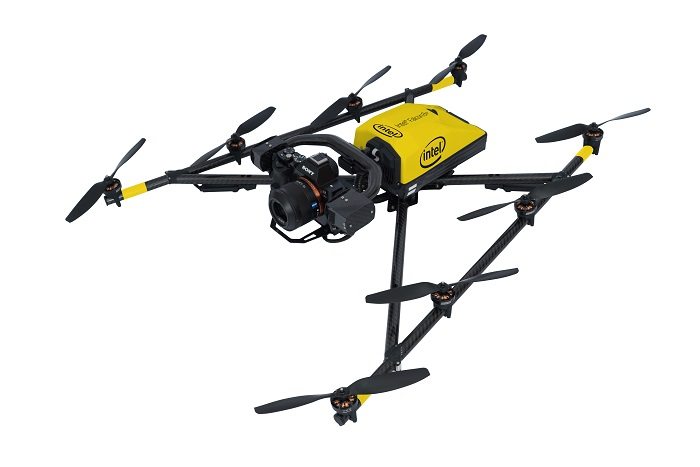Intel has unveiled its first fully Intel-branded drone, dubbed the Falcon 8+. The product is designed for industrial jobs for instance big construction sites where it might take a human hours to walk around to complete a field inspection.
The Falcon 8+ weighs only 2.7kg and flies faster than most hobby drones on the market, able to reach speeds of up to 35 miles per hour.
This isn’t Intel’s first foray into drones. The company partnered with Ascending Technologies, which it later acquired, to refine its 360-degree depth-perception cameras for collision avoidance. The cameras are now used in the commercial AscTec Falcon 8, the predecessor to Intel’s 8+, as well as Yuneec’s Typhoon H drone, which is also intended for commercial or professional hobbyist drone pilots.
The drone is controlled with a waterproof cockpit equipped with a joystick and tablet, which is much more robust than consumer drones that interface with smartphones.
Unlike with hobbyist drones, where DJI already accounts for 70% of the market, the commercial and industrial drone scene doesn’t yet have a single dominant drone maker. 3DR, which once touted itself as the leading drone company in the U.S., is now completely switching to building drones for commercial applications. And other drone makers, like Yuneec, Kespry and DJI, all have commercial-grade offerings, too.
It may feel odd to see Intel not just churning out chips and microprocessors anymore, but the company has been hard at work building all kinds of gadgets in recent years besides drone technology.
In 2014 Intel acquired Basis Science and released a smartwatch with the company, but that watch was recalled this August after several accounts of the wearable burning people’s wrists. And the same month, Intel shared its new virtual reality headset, Project Alloy, but no shipping date has been announced.
Intel never became as dominant a player in the smartphone game as it is in home computer components. But with home computer sales in a steady decline in recent years, the company has been looking for ways into new devices, and one way to do that is to put its brand on new products to advertise its technology — in this case, not only to consumers but other drone makers, too.
Amazon and Google have been branding their own consumer products as well.
Still, full hardware systems aren’t what Intel is known for. And if its complete ready-to-fly drone doesn’t take off, the company may still find its depth-sensor technology inside other drone makers’ machines, and that’s not a bad position to be in.
